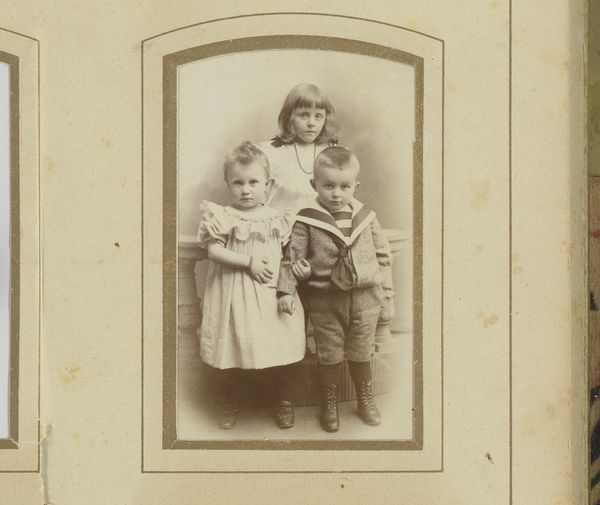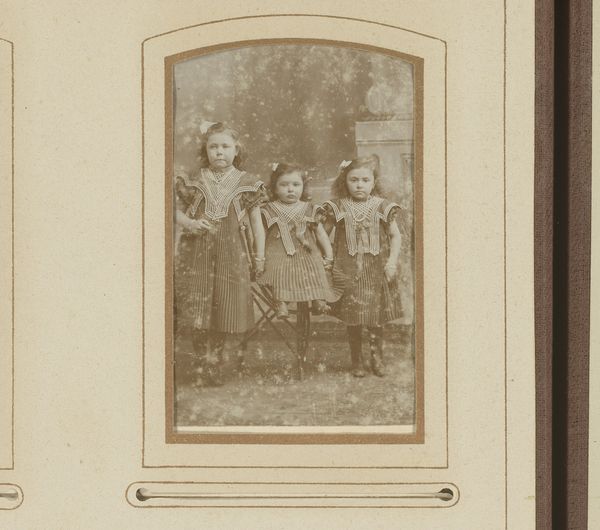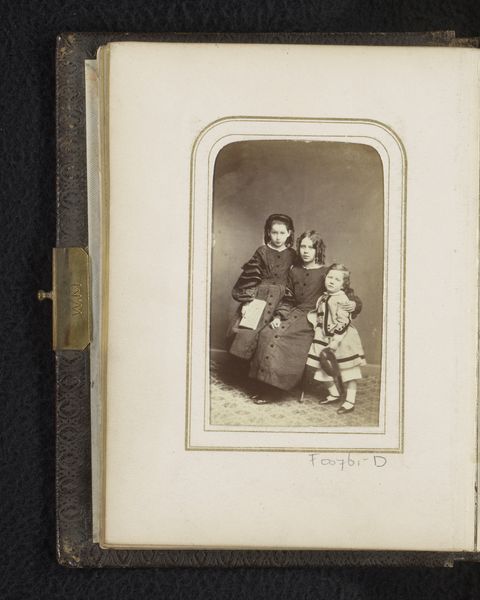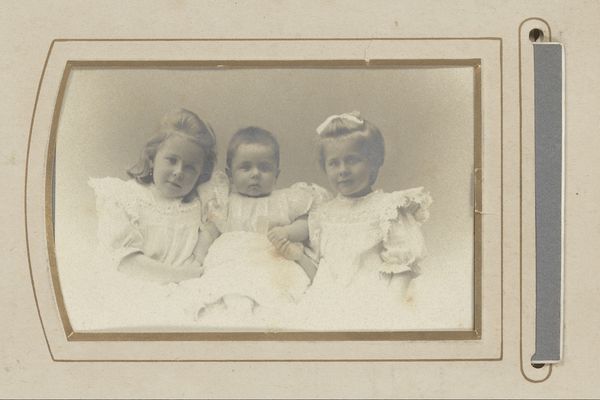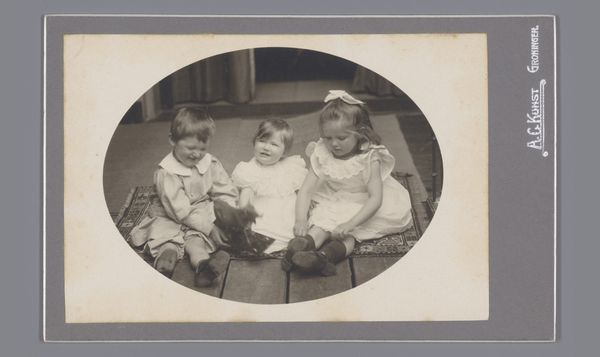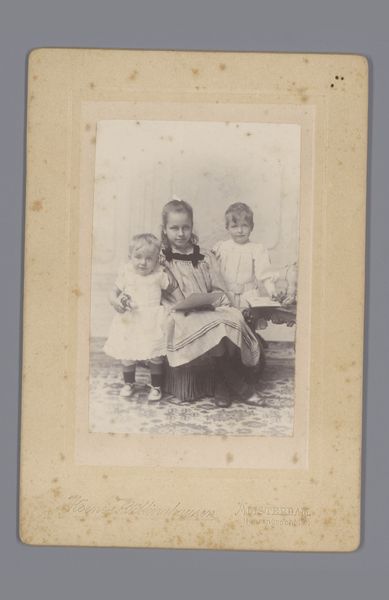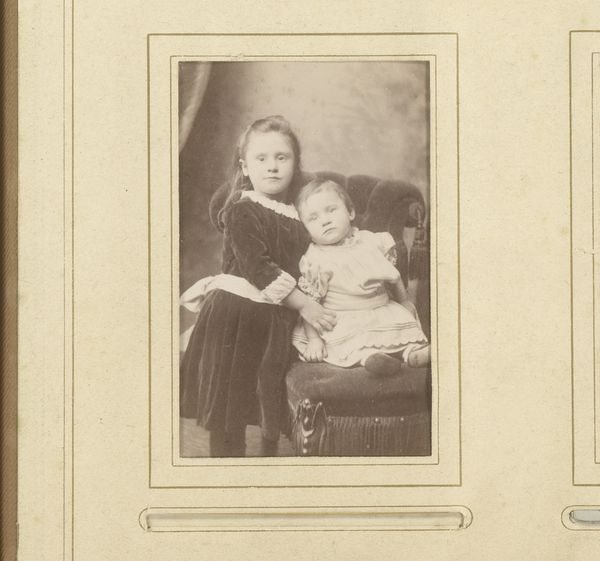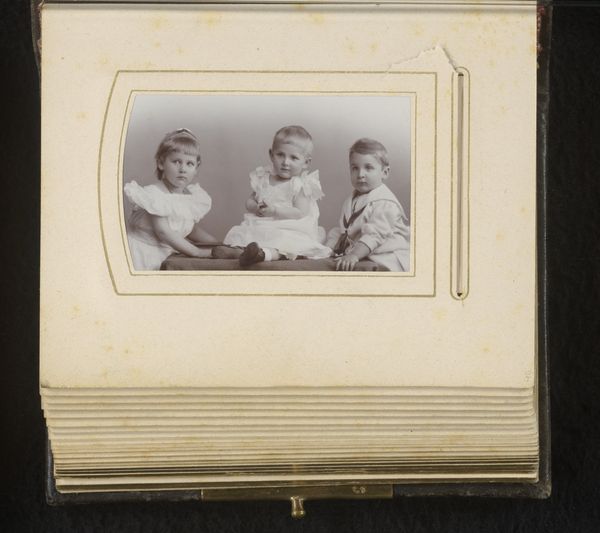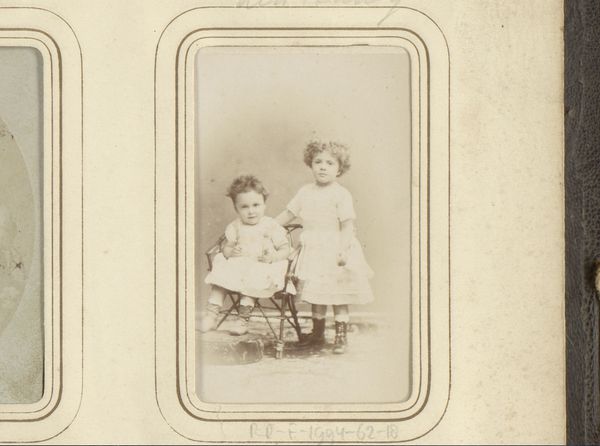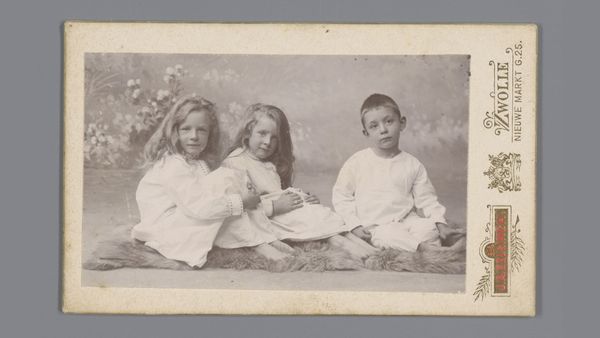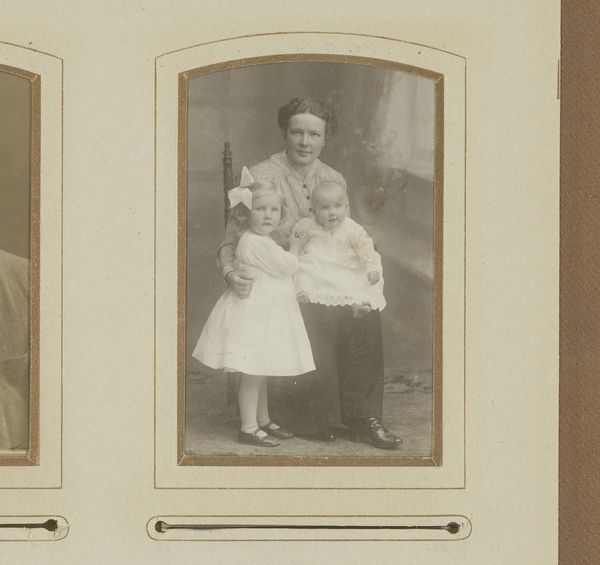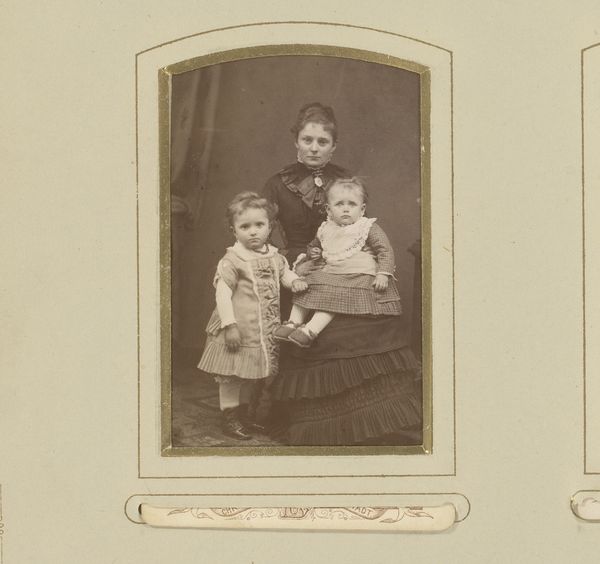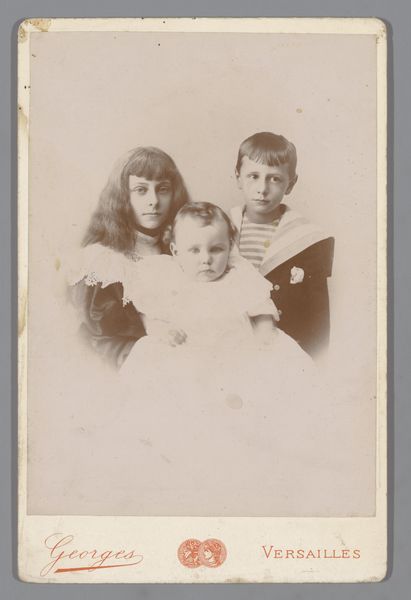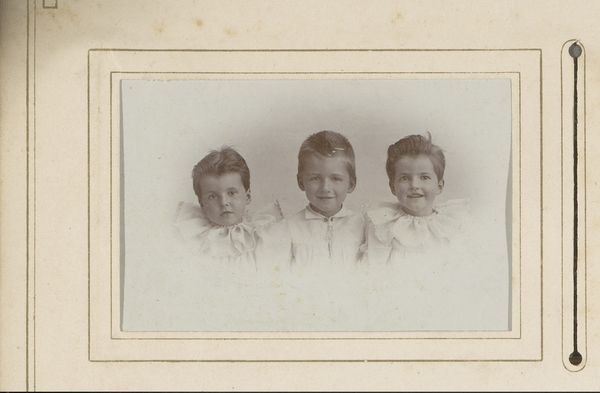
photography, gelatin-silver-print
#
portrait
#
still-life-photography
#
dog
#
photography
#
group-portraits
#
gelatin-silver-print
#
realism
Dimensions: height 41 mm, width 55 mm, height 101 mm, width 125 mm
Copyright: Rijks Museum: Open Domain
Editor: Here we have "Portrait of three children with a dog," a gelatin-silver print from sometime between 1870 and 1890, attributed to Foto Busnach. It's a sweet image, although there's a formality to it. What stands out to you? Curator: I see the children positioned almost as symbolic figures against a rather stark background. Consider the dog. It’s more than a pet; it embodies fidelity, loyalty, even guardianship. The children themselves – their poses, their clothing - these were consciously constructed representations of childhood innocence and societal values. What memories, do you think, were being preserved here? Editor: I suppose the parents wanted to capture a sense of propriety and family pride. It feels staged, almost like a tableau vivant. Curator: Precisely! And this staging tells us a great deal about the cultural expectations of the era. The very act of commissioning such a portrait was a declaration of status and aspiration. Does the composition remind you of any specific conventions of portraiture that were popular in that era? Think paintings, perhaps. Editor: I can see the echoes of formal, academic portraiture. It's interesting how photography so quickly adopted those conventions. The subdued palette, too, evokes a sense of gravitas. Curator: Absolutely. The photographer employed emerging photographic techniques, yet they adhered to established social visual codes. And look at the subtle tension: the dog is restless; is this a memento of life or performance? Editor: It makes me wonder what their lives were actually like beyond the photograph. This really does say more about societal expectations than about these kids as individuals. Thanks, I never would have looked so deeply into what seems like just a normal picture! Curator: Indeed! Photography like this is an exercise in reading social aspirations and symbolic messaging. It makes the past feel richer, more meaningful.
Comments
No comments
Be the first to comment and join the conversation on the ultimate creative platform.
